 by our College Data Analytics Team
by our College Data Analytics TeamHoward Payne total enrollment is approximately 1,060 students. 699 are undergraduates and 38 are graduate students.
Male/Female Breakdown of Undergraduates
The full-time Howard Payne undergraduate population is made up of 45% women, and 55% men.
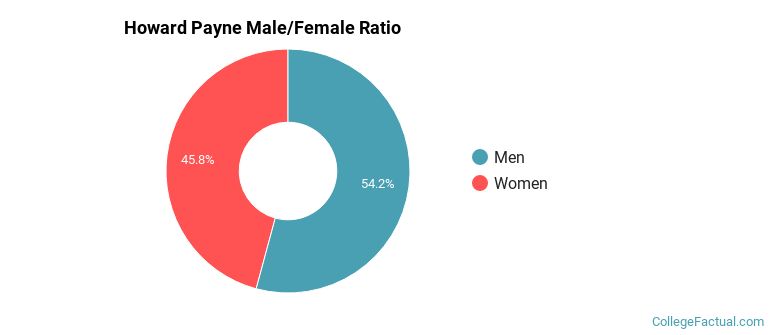
For the gender breakdown for all students, go here.
Howard Payne Racial/Ethnic Breakdown of Undergraduates

| Race/Ethnicity | Number |
|---|---|
| White | 379 |
| Hispanic | 183 |
| Black or African American | 76 |
| Multi-Ethnic | 30 |
| Unknown | 24 |
| Asian | 2 |
| Native Hawaiian or Pacific Islander | 0 |
| International | 0 |
See racial/ethnic breakdown for all students.
Male/Female Breakdown of Graduate Students
About 37% of full-time grad students are women, and 63% men.
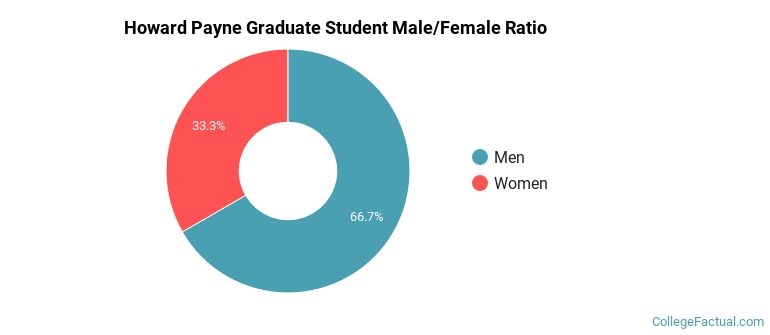
For the gender breakdown for all students, go here.
Howard Payne Racial-Ethnic Breakdown of Graduate Students
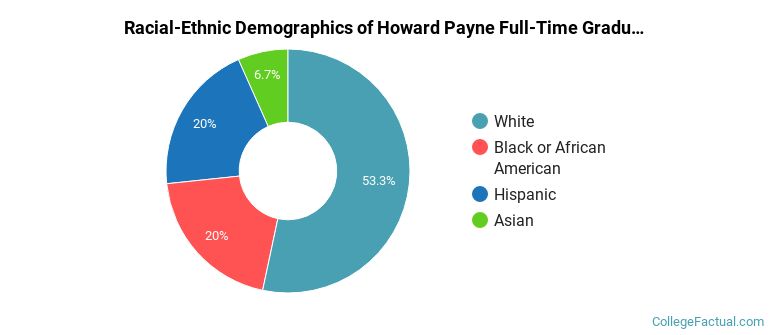
| Race/Ethnicity | Number |
|---|---|
| White | 20 |
| Black or African American | 9 |
| Hispanic | 5 |
| Unknown | 2 |
| Native Hawaiian or Pacific Islander | 1 |
| Asian | 0 |
| International | 0 |
| Multi-Ethnic | 0 |
See racial/ethnic breakdown for all students.
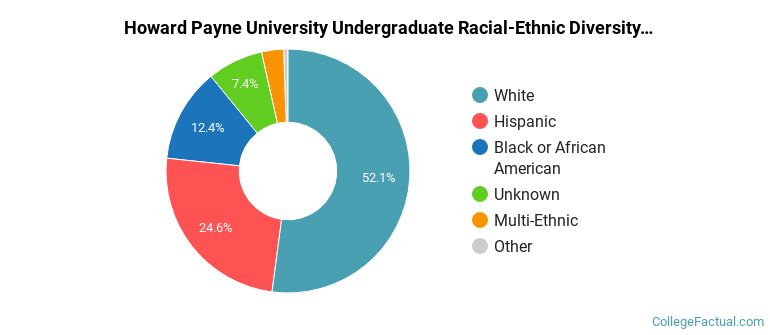
| Race/Ethnicity | Number |
|---|---|
| White | 565 |
| Hispanic | 272 |
| Black or African American | 105 |
| Unknown | 68 |
| Multi-Ethnic | 37 |
| Asian | 5 |
| Native Hawaiian or Pacific Islander | 2 |
| International | 0 |

There are approximately 497 female students and 563 male students at Howard Payne.
Howard Payne ranks 1,845 out of 2,183 when it comes to geographic diversity.
2.12% of Howard Payne students come from out of state, and 0% come from out of the country.

The undergraduate student body is split among 5 states (may include Washington D.C.). Click on the map for more detail.
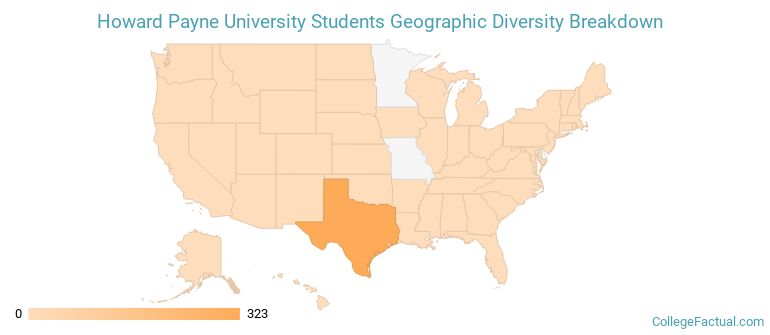
| State | Amount |
|---|---|
| Texas | 323 |
| New Mexico | 3 |
| Arkansas | 2 |
| Louisiana | 1 |
| Washington | 1 |
A traditional college student is defined as being between the ages of 18-21. At Howard Payne, 60.82% of students fall into that category, compared to the national average of 60%.

| Student Age Group | Amount |
|---|---|
| 18-19 | 328 |
| 20-21 | 324 |
| 22-24 | 194 |
| 35 and over | 90 |
| 25-29 | 57 |
| 30-34 | 27 |
| Under 18 | 0 |
Footnotes
*The racial-ethnic minorities count is calculated by taking the total number of students and subtracting white students, international students, and students whose race/ethnicity was unknown. This number is then divided by the total number of students at the school to obtain the racial-ethnic minorities percentage.
References
Department of Homeland Security Citizenship and Immigration Services
Read College Factual's Diversity Ranking Methodology.